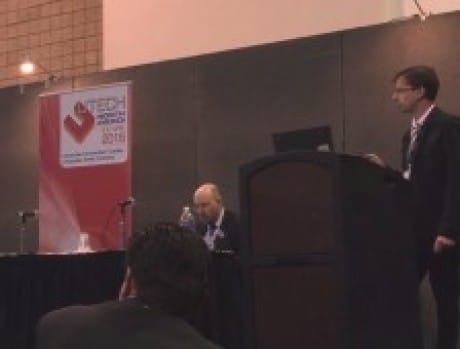CONCENTROL has conducted a study on 15 new surfactants used in formulations of rigid polyurethane foams to analyze the effect of the reactivity of the surfactant on their properties. CONCENTROL has conducted this study with the aim of providing surfactants with the best performance and minimum cost to produce polyurethane.
The study was carried out in CONCENTROL’s labs and was led by Mr. Josep Nadal, doctor of chemical sciences and technical director in PU additives.
Rigid polyurethane foams have different applications in industry, construction and the domestic sphere: refrigerators, freezers, refrigeration chambers, wall coverings and roofs… Polyurethane in these applications must meet specific properties to obtain good results in terms of thermal isolation, consistency, flammability and adhesion. Silicone surfactants are essential components for the production of polyurethane foams because they allow to stabilize foaming while also improving other properties.
From a chemical perspective, silicone surfactants are formed by a polyether and a polysiloxane. The study carried out by CONCENTROL focuses on the synthesis of different groups of surfactants where the only difference is the terminal group of the polyether, thereby modifying its reactivity.
CONCENTROL, thanks to their synthesizing capabilities, can produce surfactants with different terminal groups, reactive and non-reactiv, in order to obtain specific properties in rigid polyurethane foams, such as improving adhesion or to produce one-component foams (for use with spray guns). In this study, three different situations altering the reactivity were analyzed:
– Non-capped (-OH)
– Methoxy capped (-OCH3)
– Acetoxy capped (-OCOCH3)
Each of the 3 types of resulting surfactants have different applications depending on the type of polyurethane desired. The preparation of polyurethane panels is where most often one of these 3 types of surfactants is used. For this reason, and in order to obtain comparable results between 3 variations of surfactants, CONCENTROL focused this study on analyzing the effects of reactivity in PUR / PIR formulations in particular.
The study is divided into two parts. In the first, 15 samples of new experimental surfactants using different types of polysiloxane (based on molecular weight and ramification) and different types of polyethers (based on molecular weight and on the percentage of ethylene oxide EO) are synthesized, where the only difference is the reactivity. This part of the study observed the synthesis and characterization of these surfactants using different technologies to analyze:
– Polarity (cloud point analysis)
– Infrared spectrum
– Molecular weight
The second part consisted in the physical analysis of the foams prepared with the surfactants resulting from the first part of the study, in order to link the chemical structure with the resulting physical parameters. To do so, the following characteristics were taken into account:
– Lambda values (thermal conductivity)
– Flammability
– Measurement of dimensional stability
– General appearance
The results provided by the different analysis show us that, in the chosen formulations for polyurethane panels, the most important changes in the foam come from the different combinations of chemical components of the surfactants (EO, PO, Siloxane %) while altering the reactivity of the terminal group of silicone surfactants does not show an effect on the quality and performance of polyurethane panel foams.
Therefore we can conclude that in the 3 silicone surfactants synthesis technologies developed by CONCENTROL’s lab for this study (non-capped -OH, -OCH3 capped and -OCOCH3 capped) no negative effects were detected in the properties (thermal conductivity, flammability, dimensional stability and overall appearance) of the resulting polyurethane panels.
Capping the reactivity of a surfactant is a synthesis process that makes the resulting product more expensive. This study demonstrates that this process is not necessary to improve the properties of the different formulations of PUR / PIR panels studied.
To continue this study, we plan to evaluate the effect of different surfactants in the resulting foam by analyzing parameters such as adhesion of the foam on the metal sides of the panel and the effect on the flowability of the foam.
This study was presented to the public last April 2016 at a conference by Mr. Josep Nadal during the bi-annual CONCENTROL UTECH North America event.



